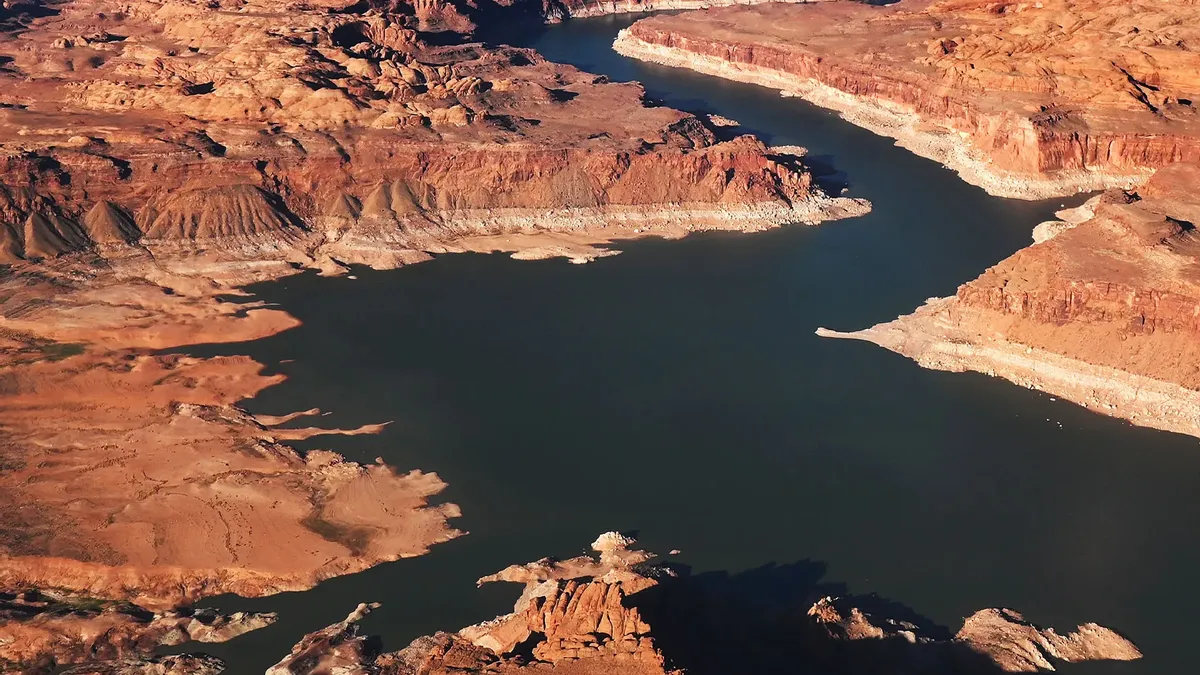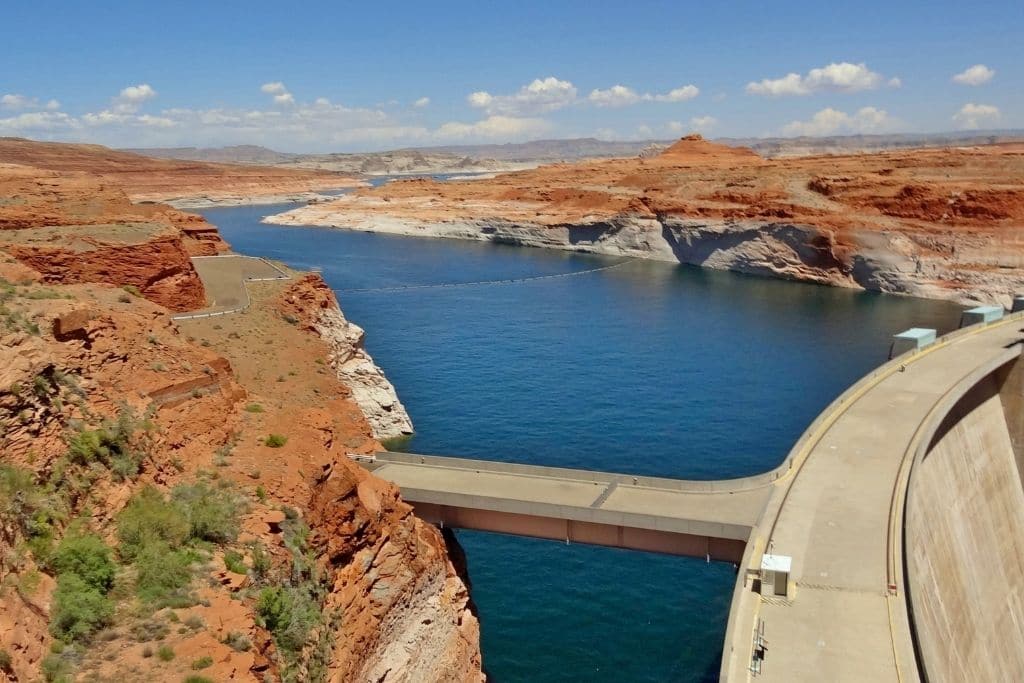Lake Powell, a reservoir created by the Glen Canyon Dam on the Colorado River, has experienced significant water level declines due to a prolonged drought in the region. This “megadrought,” lasting over two decades, has reduced inflows to Lake Powell, leading to historically low levels.
As of August 2024, the reservoir’s water level stands at about 3,582 feet above sea level, which is 38.8% of its full capacity of 3,700 feet. The declining levels raise concerns about the water supply for 40 million people who depend on the Colorado River, including cities, farmers, and tribes.
The reduction in water levels has revealed previously submerged parts of the Glen Canyon, transforming the area into a lush ecosystem with thriving plant and animal life. Native vegetation has flourished, attracting a variety of wildlife such as birds, lizards, and amphibians.
This unexpected resurgence of life has sparked a debate among researchers and environmentalists about the future management of the reservoir. Some advocate for keeping the water levels low to allow this new ecosystem to thrive, while others argue for maintaining or increasing water levels to ensure continued water supply to the southwestern U.S.

The debate is complicated by the ecological changes occurring in Glen Canyon. As the water recedes, invasive plant species like tamarisk and Russian thistle have started to spread, which poses a threat to the native flora and fauna.
However, proponents of keeping the reservoir at lower levels argue that the current ecological benefits outweigh the potential risks of invasive species. They believe that the vibrant, reformed ecosystem represents an opportunity to reassess how the reservoir is managed.
On the other hand, water policy experts and authorities emphasize the critical importance of Lake Powell for water storage and hydroelectric power. If the water levels drop further, reaching the “dead pool” level of 3,370 feet, the reservoir will no longer be able to generate power or sustain water flows through the dam. This scenario would have severe implications for the millions of people and industries reliant on the Colorado River’s resources.
Ultimately, the future management of Lake Powell involves balancing ecological benefits with the need for water security. While some advocate for a re-evaluation of water storage practices to accommodate the emerging ecosystem, others stress the importance of maintaining water levels to support the vast population dependent on the Colorado River. The situation remains fluid, with ongoing discussions about the best approach to address both environmental and human needs.

